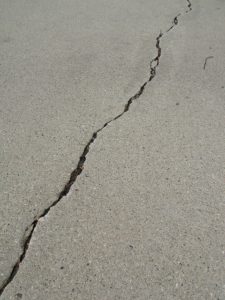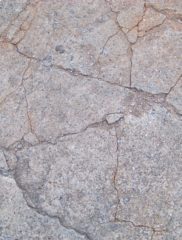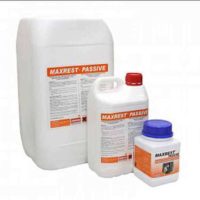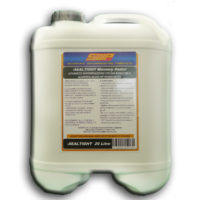What is concrete cancer?
So what is concrete cancer? Freshly poured concrete is a mix is of a highly alkaline nature. The alkalinity helps prevents and protects the rebar steel from corrosion. This is what is concrete cancer. Concrete cancer, over time, develops since the highly alkaline nature of concrete is reduced through water ingress through 2 main processes.
- carbonation is due to the presence of carbon dioxide in water forming a weak acid which reduces the alkalinity of the concrete.
- Presences of chloride ion ingress in water
Both processes leave the reinforcing steel vulnerable to corrosion. When steel rusts it can expand up something like 8 times its original size. This expansion of the rusting steel rebar will cause the concrete to stain, crack, and eventually, over time, large pieces can fall off.
Some other Causes of Concrete Cancer
- Where reinforcing bars are too close to the surface (insufficient thickness of concrete above or below the rebar steel). Allows the water to seep/wick through the concrete keeping it moist and carry the carbonation/chloride ion more quickly to the rebar. This process causing rust in the steel.
- Presence of incompatible/mixed metals eg. ty wire not the same steel makeup as the rebar. This causes a chemical reaction via what is called electrolytic cell that in the presence of water allows the corrosion process to take place.
- Shrinkage of the slab, or other faults caused by the initial pouring of the slab
- Stress fractures, or general wear and tear.
- Poor installation of window and door lintels. Especially where there is no waterproofing or protective coating on such steel.
- Damage to any part of steel coatings & protections by the installers
- Axillary fittings of pipes etc. where the design element is broken by drilling/cutting/fixing bolts/machinery to a slab,
What are the Signs of concrete cancer
- Surface flaking and cracking concrete
- Surface rust stains that appear, sometimes out of nowhere, from within the concrete. Usually found rust stain running along cracks in the concrete.
- Slightly Raised Cracks and divots forming in the concrete
- Leaks that appear in the roof or internal walls
- Large bits of concrete missing or about to fall off
- Failure of waterproofing membrane coating
- Bubbling surface coatings, especially if retaining water next to the concrete
What are the Risks associated with concrete cancer
Now it is known what is concrete cancer it’s wise to know what the risks are with concrete cancer. Often spalling concrete is unsightly, but because it spalling concrete means the building owner may have a potential OHS problem. The longer the exposure to the elements, the more likely if left untreated that small to large pieces of concrete will break off and fall. This may expose passers-by and other areas of the buildings to further damage.
The longer the lack of maintenance the more severe the corrosion. The greater the repair cost since new sections of reinforcement steel bars may have to be inserted. Increased volumes of repair material will be required. Plan your maintenance from day one or………
Eventually, the risk of total structure collapse becomes greater as the strength of the concrete/masonry is weakened by the ongoing carbonation/chloride ion processes. When high load-bearing or stressed structures (bridges, high-rise etc) are involved in damaging environmental events (eg. cyclones, earthquakes etc) cause critical damage to the entire structure.
Concrete Cancer Repairs and Building Waterproofing Maintenance are critical to the long-term service of the building structure. Identification of underlying problems that cause visible and structural defects is critical. Once identified these defects MUST be repaired using the best-suited concrete repair materials
via thebalancesmb.com/how-to-repair-spalled-concrete
Note the website thebalancesmb.com recommends
“Wait until the surface is dry before applying any compound or patching”
Finding completely dry concrete is unlikely so drying a concrete surface is difficult to achieve. This gives Drizoro products an advantage on how to repair spalled concrete. Drizoro recommends that surface must be Damp. No WAITING for the surface to DRY. Just dampen and carry out your repair


Need to know more on how to repair spalled concrete then don’t hesitate to contact our team to learn more




















